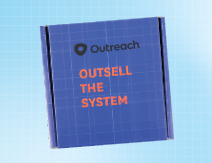If you’re subscribed to several mailing lists within our industry, you’ve likely received dozens of emails with eco-friendly products over the last few months. “Save on recycled totes”, “2-for-1 pens made from bamboo”, or maybe you’re part of the 400% increase in sales for re-usable straws (it was named product of the year in 2019 by Advertising Specialty Institute). More on straws later. Search volume for sustainable products has more than tripled over the last 24 months.
Needless to say, there’s a new interest in eco swag that has caused promotional product providers to ramp up their marketing efforts. While we’re thrilled to see increased interest for sustainability in our industry – we must recognize that sustainability is more than a fidget spinner-esque trend, and advocate for better, more permanent change.
In 2018, Fast Company published an article titled “The $24B promotional products industry is an environmental disaster”. That article prompted a surprisingly large response from our industry defending promotional products as a whole, with many choosing to nitpick specific pricing facts rather than addressing the elephant in the room – swag has a sustainability problem.
For decades, the promotional products industry has been a race to the bottom on pricing, causing distributors to opt for cheaper materials and in turn produce swag that gets tossed in the trash. However, there is a way to create swag responsibly. It’s essential for companies investing in promotional products to audit their practice, as we seek to reduce the impact we have on our planet.
Cheap Pens Won’t Cut Through the Noise
This may surprise you, but our VP of Sales has been making a deliberate effort to sell less stuff for years. This means less orders for pens, cheap t-shirts, and flimsy tote bags. The reason for that is simple – they were never an effective use of your budget.
In marketing and sales, we talk a lot about “cutting through the noise”. Over the course of a year, our clients (and yours) are bombarded with thousands of emails, sales calls, and yes, flimsy pens. Playing the volume game with swag has never moved the needle. As the world becomes increasingly noisy, if you want to break through to your audience, the need to create truly memorable experiences grows even more important.
Swag is still an amazing and effective tool to start new conversations, re-engage existing customers, and to send thanks. Promotional products consistently rank as a favorite for recipients, but only when done well.
We’re here to help you navigate these important decisions and provide a framework to push for better from your promotional products distributor. Focusing on sustainability isn’t just the right thing to do, it also makes the most business sense.
Product Selection
In a perfect world, you could browse a catalog of products and feel confident that whichever item you landed on would be produced in a sustainable way. Unsurprisingly, that’s not the case. Each year, billions of promotional products are created, all with a different journey from raw materials to production to distribution and for many, to the landfill.
When we look at all the ways to be more sustainable, product selection is the most important decision you will have to make. Generally, we believe that environmental impact occurs in two important phases:
- How the product is made
- How the product is used
It’s on us to demand better, and we hope you’ll consider these impacts the next time you make a purchasing decision.

1. Production: Not all products are created equally
The second you place an order for a product, you’re sending a variety of signals up the supply chain. Sure, your pens were likely sitting in a warehouse waiting to be customized, but every product you buy is a vote of confidence that cause more to be produced.
For garments, 74% of the environmental impact occurs during production and distribution. That means nearly ¾ of the impact of that item occurs before you even see it. This largely has to do with the collection and processing of raw materials. For example, with an order of 100 t-shirts, you can expect to use nearly fifty pounds of cotton, most of which is grown thousands of miles away from where the garment is produced. To grow the cotton and dye the shirt itself, you can expect to use about 713 gallons of water per shirt, meaning this order requires a tenth of an Olympic sized swimming pool to fulfill. Then, to get the shirts to you and your clients, you can add some carbon impact for that journey as well.
Editor’s Note: We’re working to prepare a SwagLab test of our eco-friendly t-shirt options. Many of these shirts utilize alternative or recycled materials to mitigate the largest factor of environmental impact: the growing and harvesting of raw materials. To be notified of when this review is ready, please subscribe to our newsletter.
All these facts aren’t to ward you off from ordering t-shirts (or any other product). Tees remain one of the most popular product categories that people want to receive and can result in thousands of impressions for your brand, but before you press order, we encourage you to also consider the impact on the planet (more on this shortly).
If you’re in the position to make product decisions for your business, or you’re working with a company that focuses on sustainability, you can choose products with far less impact. Marine Layer, a favorite of ours, produces ultra-soft tees made in part by recycled shirts and other material greatly reducing the amount of water required to produce each garment. Buying items from recycled material is an effective way to reduce the impact of your investment.
More companies are offering recycled or reduced impact items each day. Purchasing a product made from a trusted brand, rather than a cheaper, generic product can make a huge difference on the environmental impact.
Back to re-usable straws
Apparently, Americans use a crazy amount of straws – 500 million a day (that’s 1.6 straws per person per day!). Who doesn’t want to reduce that number? Yet, giving me a reusable straw would be bad for you and the planet. It’s not because I’m a fan of single use plastics, it’s because I don’t use straws at all. Even before Seattle, San Francisco, and other major cities started banning plastic straws, many Americans indicated that they prefer to not use straws at all. Think about the usefulness of your product choice to the recipient before you place your order.

2. Usability: Make products people want
So, if re-usable straws aren’t the silver bullet to creating sustainable swag, then what is? The answer: probably nothing. The true strength of our industry is the breadth of catalog and the ability to produce truly custom items that your client, employee, or brand evangelist is bound to love. For me, I’d take a reusable, insulated water bottle any day of the week, since I’ll actually use it.
Remember when I mentioned that most of a product’s environmental impact occurs during production? That’s not to say you can ignore a product’s impact once it has been produced. The environmental cost is all for nothing unless the recipient of your product uses it. This leads us to the second question you should ask yourself: what’s the longevity and usability of this product?
Before being a part of this industry, I heard swag referred to as “stuff we all get”. We’ve all been to a conference where some cheap tchotchke or two was given to us. Did you keep it? Did you use it? Swag that’s done bad, even if it’s more eco, ends up in the landfill.
Unfortunately, this new, increased focus on sustainable products has caused an influx of swag made from recycled material or reusable items that still don’t get used. We have a great list of products that have less impact on the environment, but the goal still must be to create swag that people will use.
Products that give back and have a broader mission
Consider investing in items that go beyond being sustainable, seeking to make an impact in their community. Each Miir product, for example, has a code engraved on the bottom. You can enter that code on their site to see which sustainable project you supported with your purchase. We’ve also seen items that plant a tree for each purchase, another way to do good based on what you buy.
By shifting the focus away from dollars per item to usefulness, you’ll not only be improving your return on marketing investment, but also ensuring that less of what you make ends up in the trash. Even though I’ve harped on the re-usable straw thus far, they are a great investment for the right audience. One of our restaurant clients uses them as a reward for loyal customers who dine-in often – which will reduce the environmental impact. If you’re a straw enthusiast, research suggests that a single reusable straw can take the place of 295 plastic ones – hardly a wasted investment.
So yes, we encourage you to buy less swag this year. Spend more time consulting with your product experts to make sure the items you’re ordering will get used and cherished. Regardless if you’re one of our clients or another distributor, let’s challenge each other to make better. By making products that people are thrilled to use, you’ll be making a positive impact on your people as well as the planet.
It’s on us to demand better
Sustainability is a goal that we all must push for. It takes many forms: taking the bus instead of driving, reducing energy usage at home, and demanding better from our industry. Swag is here to stay, and it’s an increasingly effective way to promote your purpose, but like most investments, it’s best when done carefully and sustainably.
Here are three things to think about when placing your next order:
- Buy less stuff: maximize your impact by investing in things people want to use
- Product selection has the most impact – consider how your item is grown, produced, and used
- It’s on us, as clients, consumers, and an industry to demand better and start asking questions
Kotis has always tried to maximize our impact on people and minimize our impact on the planet. Our bookend company values are to fight for better and do the right thing. We hope others will follow in our footsteps to advocate for a more sustainable and ethical industry. From the entire team at Kotis, we hope you’ll join us.
Let’s do sustainable swag together.



